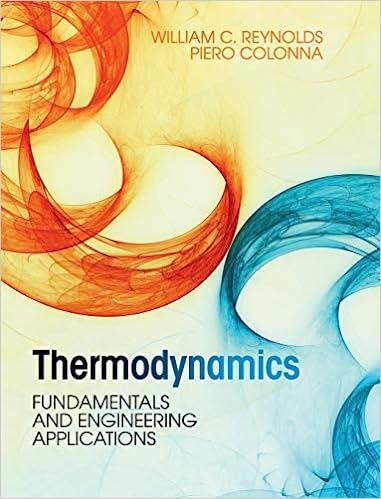Question
Dry Corn is 70% starch, and 30% protein/fiber/oil, on a dry basis. Unconverted starch from hydrolysis and unfermented glucose from fermentation end up in the
Dry Corn is 70% starch, and 30% protein/fiber/oil, on a dry basis. Unconverted starch from hydrolysis and unfermented glucose from fermentation end up in the DDGS, along with non-starch components of the feedstock. Corn can be bought/sold with 10% moisture, at a price of US$5.00 per bushel, equivalent to US$219 per tonne (dry basis) or US$197/tonne (wet basis). Under these conditions, DDGS would be sold at US$208 per dry tonne (DDGS would also contain 10% moisture). A 150 million liter per year (MMLY) corn ethanol plant would require 365,000 tonnes of (wet) corn annually, based on 95% of the incoming starch converted, an 11% mass gain as starch is converted into glucose, and 93% of the glucose fermented into ethanol and CO2. This also assumes that the product ethanol is 99.5% pure, and contains 2% denaturant. With ethanol sold at US 65 cents/L, thermal energy at 5.2 cents/L, and other costs at 8 cents/L, we projected a (pre-tax) profit of 22 cents per liter of denatured ethanol sold. This includes a cost of 48 cents for corn for every liter of denatured ethanol produced, and revenue from DDGS. We are now going to examine the production of butanol (C4H9OH) from the same quantity of corn, because of interest in butanol as a drop-in fuel.
a) What is the maximum corn price ($/bu or $/tonne, wet basis) that could be sustained and still leave the a corn-ethanol plant in a break-even financial position, with ethanol at 65 cents/L (i.e., profit = zero)? What is the minimum ethanol price that would allow the plant to be profitable with corn at US$5.00/bu (January 2022 price) and US$7.00/bu (March 2022 price)? b) Develop a balanced reaction equation to account for conversion of glucose (C6H12O6) into butanol (C4H9OH) and CO2 (hydrogen or water may be produced as well). c) Based upon 365,000 tonnes of wet corn from the data above, and assuming the same conversion efficiencies/yields (i) what mass of glucose would be available for fermentation? (ii) what mass of butanol would be produced at the end of fermentation? (Assume the same fermentation yield from glucose (in %) as for ethanol) (iii) Given 99.5% purity of butanol after distillation, and NO denaturant, what is the annual volumetric production of 99.5% pure butanol from 365,000 tonnes of (wet) corn (the same quantity of corn required for 150 MMLY of denatured ethanol)? d) If we assumed butanol could be sold at the same wholesale price as gasoline (C$89 cents/L as of January 2022), would the production of butanol be more or less profitable than the production of ethanol, on a per liter basis (taking into account all revenues (fuel + DDGS), expenses, etc.)? The thermal energy cost and other costs for corn-derived butanol are listed in the data table below. e) Comment on your results in part (d), and how it might influence policies to encourage butanol production. Data: Density of butanol = 0.81 kg/L Molarmasses:C=12;O=16;H=1 Thermal energy cost = US 6 cents per L of butanol Other costs (including capital, enzymes, yeast, electricity) = US 10 cents/L 1 Cdn dollar = $0.78 US Dollars 1 bushel of corn = 56 pounds (25.4 kg) Density of ethanol = 0.79 kg/L
Step by Step Solution
There are 3 Steps involved in it
Step: 1

Get Instant Access to Expert-Tailored Solutions
See step-by-step solutions with expert insights and AI powered tools for academic success
Step: 2

Step: 3

Ace Your Homework with AI
Get the answers you need in no time with our AI-driven, step-by-step assistance
Get Started


